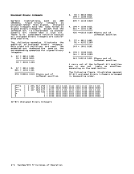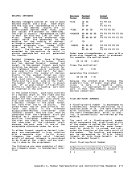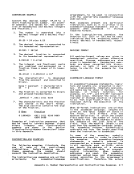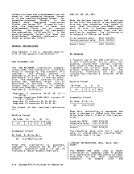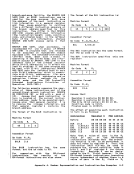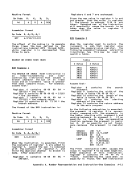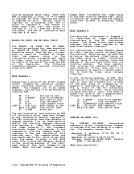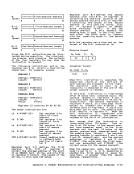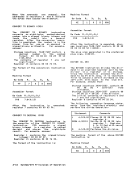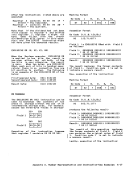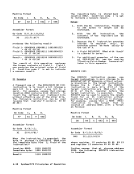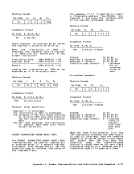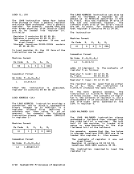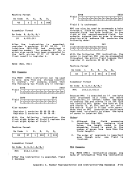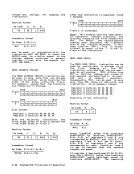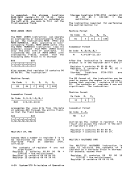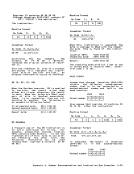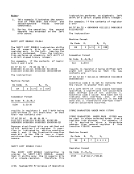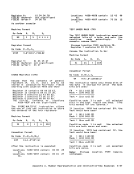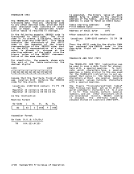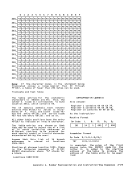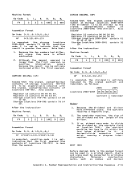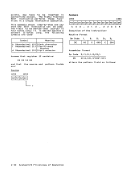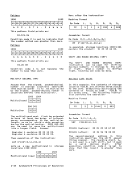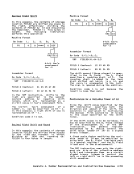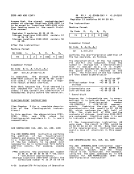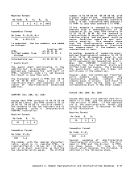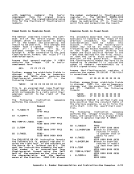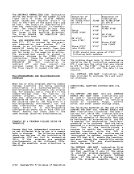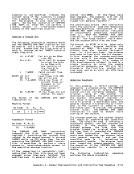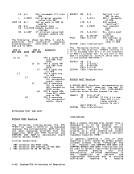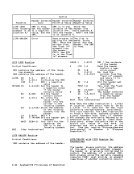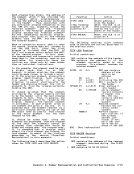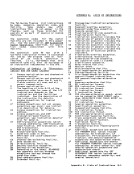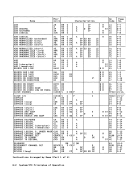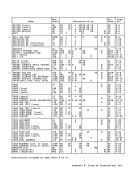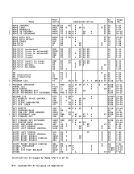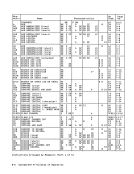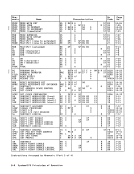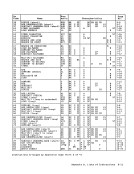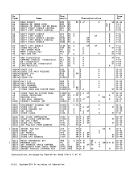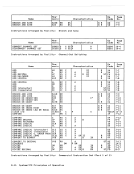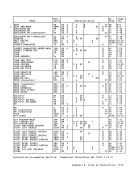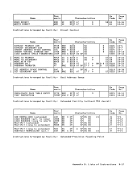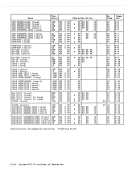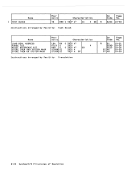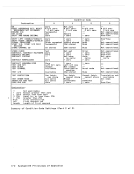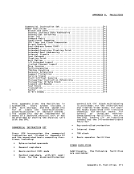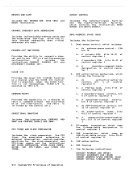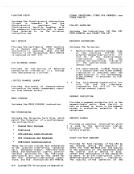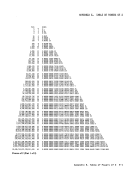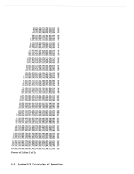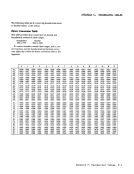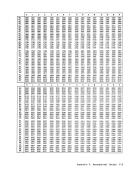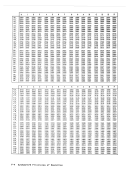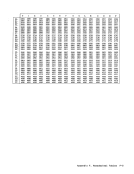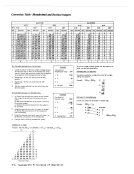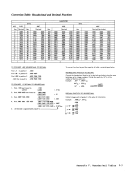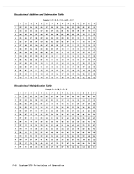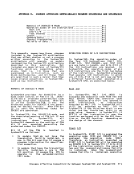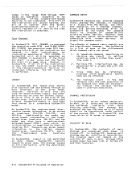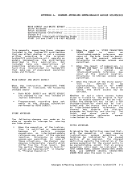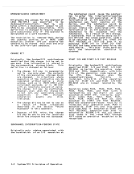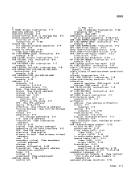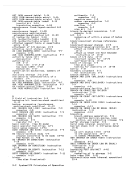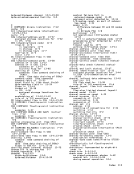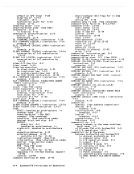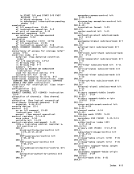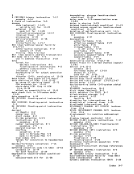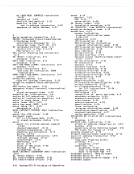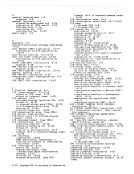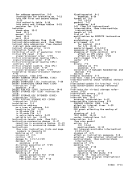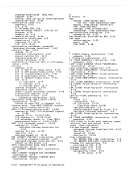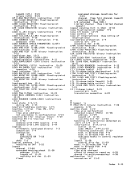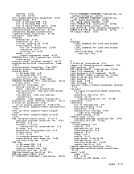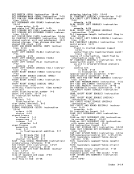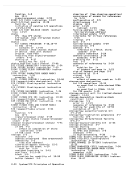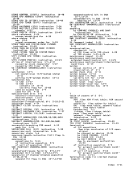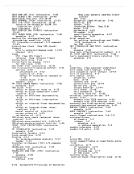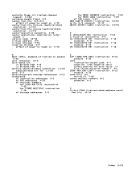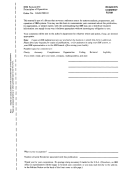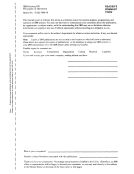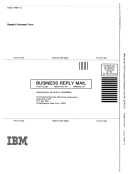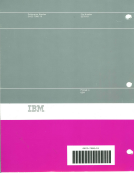A or I W Channel 2+
AI~ Subchannel
2$
AN CU/ Device ¢ 3~ A Available
I Interruption pendingI~ = Interruption pending for a device other than the one
addressedI# = Interruption pending for the addressed device
W WorkingN Not operational * CSW stored ¢ • When a nonimmediate I/O operation has been initiated and
the channel is proceeding with its execution, when an
immediate operation has been initiated and command
chaining takes place, or when command retry is signaled
in response to the first command and is honored by the
channel, condition code0 is set. • When an immediate operation has been initiated, and no
command chaining or command retry is taking place, or
the device is not ready, or an error has been detected
by the control unit or device, for theSIO function
condition code 1 is set, and theCSW is stored. Under
the same circumstances, for theSIOF function, condition
code0 is set, and subsequently an I/O-interruption condition is generated. The CSW stored when the 1/0- interruption condition is cleared contains the same
information as theCSW stored during the SIO function
under the same conditions, plus the deferred-condition
code-l indication.~ The SIOF function may cause condition code 0 to be set, in
which case the other condition code shown will be specified
as a deferred condition code.
& When the subchannel is interruption-pending because anI/O operation is concluded at the subchannel, condition code 2
is set. When the subchannel is interruption-pending for any
other reason, condition code 1 is set, and the status
portion of theCSW is stored with a one included in the
busy-bit position of the unit-status field.
$ The AIX state only occurs on the multiplexer channel.
+ With start-I/O-fast queuing, the channel-working state (WXX)
is normally treated the same as the available channel statefor the purpose of performing the SIOF function and the
condition-code setting depends on the state of the subchan
nel. When the working state of the channel precludes the
acceptance of theSIOF function, however, condition code 2
is set. When the block-multiplexing-control bit is zero, it
causes theSIO function to be performed instead of the SIOF function, so condition code 2 is set. ~ When the SIOF function causes condition code 0 to be set and
the subchannel is provided withstart-I/O-fast queuing, the I/O operation may remain pending at the subchannel instead
of being terminated.
Note: Underscored condition codes pertain to situations that can
occur only on the multiplexer channel.
ConditionCodes Set by START I/O and START I/O FAST RELEASE
Programming Notes
1. The instruction STARTI/O FAST
RELEASE has the advantage over
STARTI/O that the CPU can be
released after theCAW is fetched, rather than after completion of a
possibly lengthy device-selection
procedure. Thus, theCPU is freed
for other activity earlier. A
disadvantage, however, is that if a
deferred condition code is
presented, the resultantCPU execution time may be greater than Chapter 13. Input/Output Operations 13-31
A
2$
A
I Interruption pending
addressed
W Working
the channel is proceeding with its execution, when an
immediate operation has been initiated and command
chaining takes place, or when command retry is signaled
in response to the first command and is honored by the
channel, condition code
command chaining or command retry is taking place, or
the device is not ready, or an error has been detected
by the control unit or device, for the
condition code 1 is set, and the
the same circumstances, for the
code
information as the
under the same conditions, plus the deferred-condition
code-l indication.
which case the other condition code shown will be specified
as a deferred condition code.
& When the subchannel is interruption-pending because an
is set. When the subchannel is interruption-pending for any
other reason, condition code 1 is set, and the status
portion of the
busy-bit position of the unit-status field.
$ The AIX state only occurs on the multiplexer channel.
+ With start-I/O-fast queuing, the channel-working state (WXX)
is normally treated the same as the available channel state
condition-code setting depends on the state of the subchan
nel. When the working state of the channel precludes the
acceptance of the
is set. When the block-multiplexing-control bit is zero, it
causes the
the subchannel is provided with
of being terminated.
Note: Underscored condition codes pertain to situations that can
occur only on the multiplexer channel.
Condition
Programming Notes
1. The instruction START
RELEASE has the advantage over
START
released after the
possibly lengthy device-selection
procedure. Thus, the
for other activity earlier. A
disadvantage, however, is that if a
deferred condition code is
presented, the resultant
























































































































































































































































































































































































































































